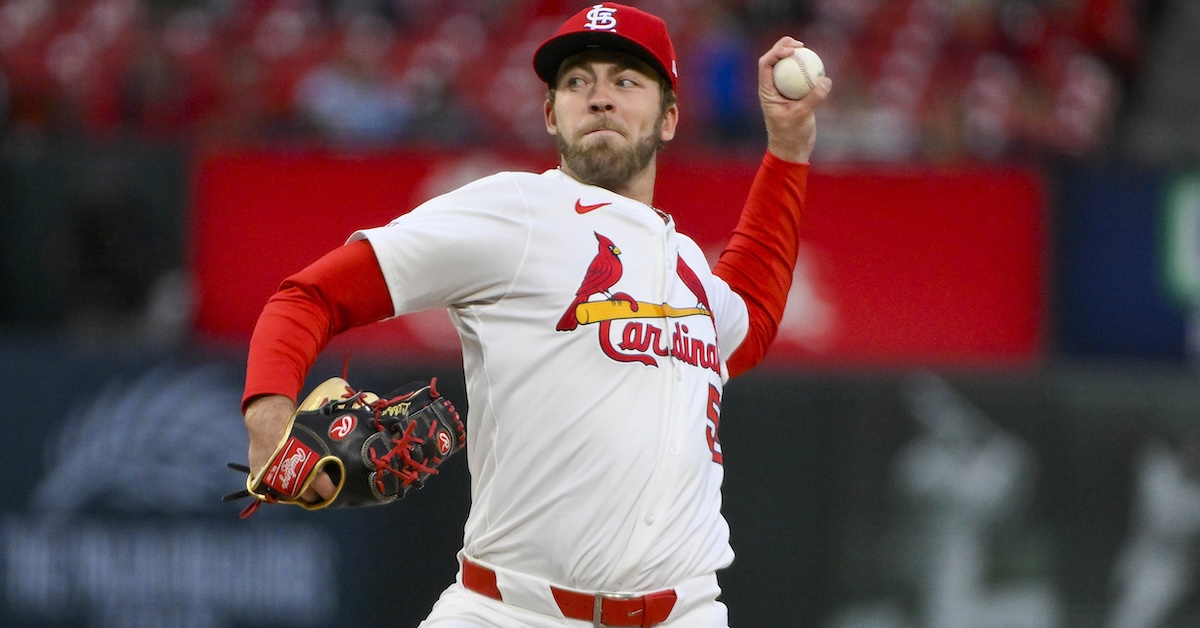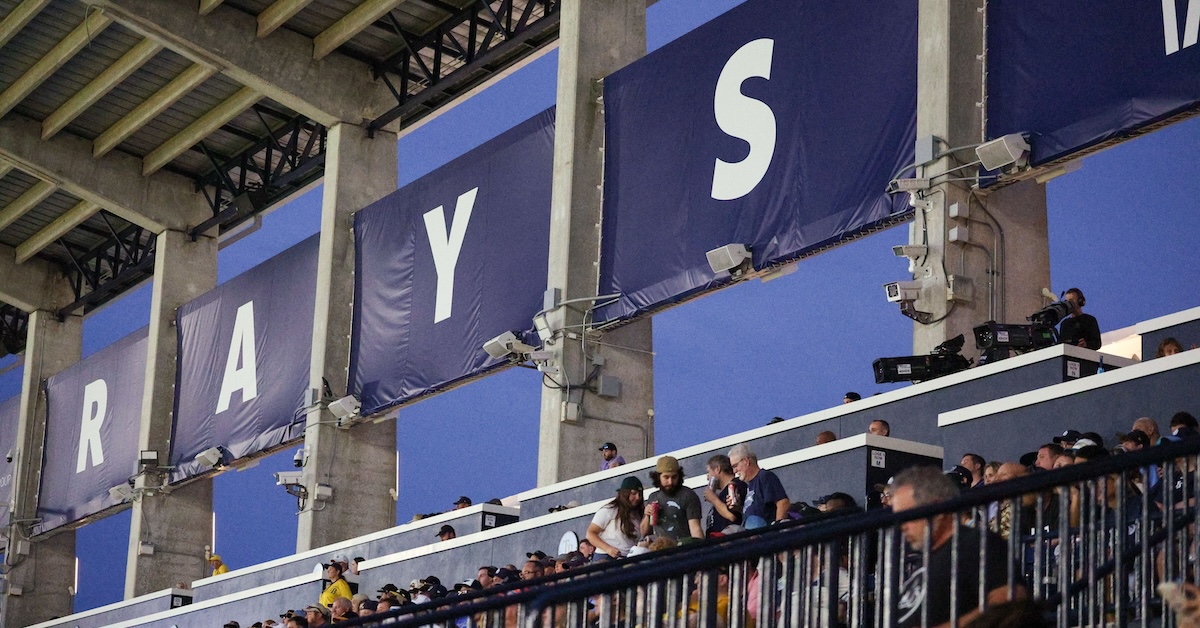Matthew Liberatore Addresses His 2019 and 2020 FanGraphs Scouting Reports

Matthew Liberatore was ranked eighth in one of the game’s top-rated farm systems when our 2019 Tampa Bay Rays Top Prospects list was released that January. Drafted 16th overall the previous summer out of Glendale, Arizona’s Mountain Ridge High School, the now 25-year-old southpaw was assigned a 50 FV by Eric Longenhagen and Kiley McDaniel. Twelve months later, Liberatore was no. 3 — still with a 50 FV — on our 2020 St. Louis Cardinals Top Prospects list, which was published a week after Liberatore was traded to the NL Central club in a multi-player deal that included Randy Arozarena.
What did Liberatore’s 2019 and 2020 scouting reports look like? Moreover, what does he think of them all these years later? Wanting to find out, I shared some of what Eric and Kiley wrote and asked Liberatore to respond to it.
———
January 2019:
“He was arguably the best high school pitcher in the class, evaluated heavily early on by the Giants (who picked second), before settling into the 7-13 range by June.”
“That’s pretty cool,” Liberatore replied. “I was highly scouted in my senior year — I think I had over 100 scouts at my first start — so I wouldn’t say it was one team in particular. I knew that I was going to be scouted through the first round, but there wasn’t necessarily any indication, right up until the draft, as to who was going to take me.”
“When [Kyler] Murray was selected, teams picking behind Oakland suddenly had access to one more player than they had anticipated… Other teams hadn’t considered the possibility that Libby would fall to them and either hadn’t done a lot of background work, or weren’t comfortable with how he might alter their bonus pool math.”
“I definitely thought the A’s were a possibility, and I was also told the Pirates were a possibility,” Liberatore recalled. “A couple minutes before the pick, we got a phone call saying [the A’s] chose to go another direction. I found out it was Kyler Murray. I figured he was probably going to go in the first round of the NFL draft in a couple of months, so I was definitely surprised by that. But I grew up going to Tampa every summer to visit family, and had been to plenty of Tampa Bay Rays games throughout my life, so to end up going to them at 16 ended up working out pretty well for me.”
“When Liberatore was at his best, he’d throw strikes with 93-97 for the first several innings of his starts, show you a 70 curveball, a good change, and alter the timing of his delivery to toy with hitters.”
“Pretty similar to now,” Liberatore opined. “I don’t necessarily quick pitch or do the hesitation to alter the hitter’s timing as much anymore, but that’s definitely not something that I’m crossing off the list. So, pretty similar scouting report to how I pitch now.”
“At other times, he’d sit 88-92 with scattershot command and get too cute with Johnny Cueto shenanigans.”
“Hmm. I mean, I’m not going to agree with that, necessarily,” Liberatore said. “You have days where you feel really good and go out there with your best stuff, and then you have days where you don’t feel so good and have to find other ways to get hitters out. If you look at my numbers in high school, I did a pretty good job of doing that. So, I wouldn’t say I got too cute with anything.”
Asked if he could directly address the Cueto comp — the way the veteran hurler will sometimes shimmy and turn before delivering a pitch — Liberatore said it was all about disrupting timing.
“Why do guys throw a breaking ball or a changeup?” he replied. “It’s all about altering timing, and that’s another way to do that. Some scouts didn’t like it. I had a guy come into my house and tell me to quit doing that. But if it gets outs it gets outs, and Johnny Cueto was doing it at the highest level of the game. And there are other guys that do the same thing. I don’t think that it ever hurt me at all.
“I actually used it as a reset a lot of times. If my regular delivery wasn’t working, I could go to one of those and find the right feel to lock me back in, sync me back up. I never viewed it as trying to trick the hitter outside of it being no different than throwing a changeup or a breaking ball to throw off the hitter’s timing. I mean, I’ve definitely toned it down since then. I do it rarely, but like I said before, it’s certainly not something I’m going to get away from forever.”
———
January 2020:
“Because Liberatore’s fastball has sinker movement, the growth of this changeup is going to be the most important aspect of his development, since those two pitches have similar movement and will theoretically tunnel better.”
“I throw two different fastballs,” Liberatore said. “One of them has sinker movement, and one of them is a little more hoppy. I think the development of the cutter has been bigger than the development of the changeup for me. Being able to own the inner half of the plate is something that has helped me quite a bit.
“I’ve thrown both my whole life. The two-seam, if you look at it in a vacuum, is a pretty average analytical pitch. But it plays off the rest of my arsenal. It doesn’t sink, but it runs into left-handers so I’m able to show them a slight difference in shape without having to change the velocity.”
“His knockout curveball has all-world depth… it’s the type of pitch that’s hard to hit even if you know it’s coming, but it might be easy to lay off of in the dirt, because its Loch Ness hump is easy to identify out of the hand.”
“Yeah. I think it all depends on how you use your other stuff around it,” Liberatore said. “If you throw any pitch every single time, it’s going to be easier to pick up. That’s why I’ve always kept that four-seam fastball, to be able to show guys something up in the zone, to tunnel off of that curveball. Yeah, it can be easy to lay off at times, but if I start landing it for a strike you have to honor it. I think it can definitely be a knockout pitch for me.”
“The total package should result in an above-average big league starter.”
“I’ll take that.”
——
Previous “Old Scouting Reports Revisited” interviews can be found through these links: Cody Bellinger, Dylan Cease, Matt Chapman, Ian Happ, Jeff Hoffman.








